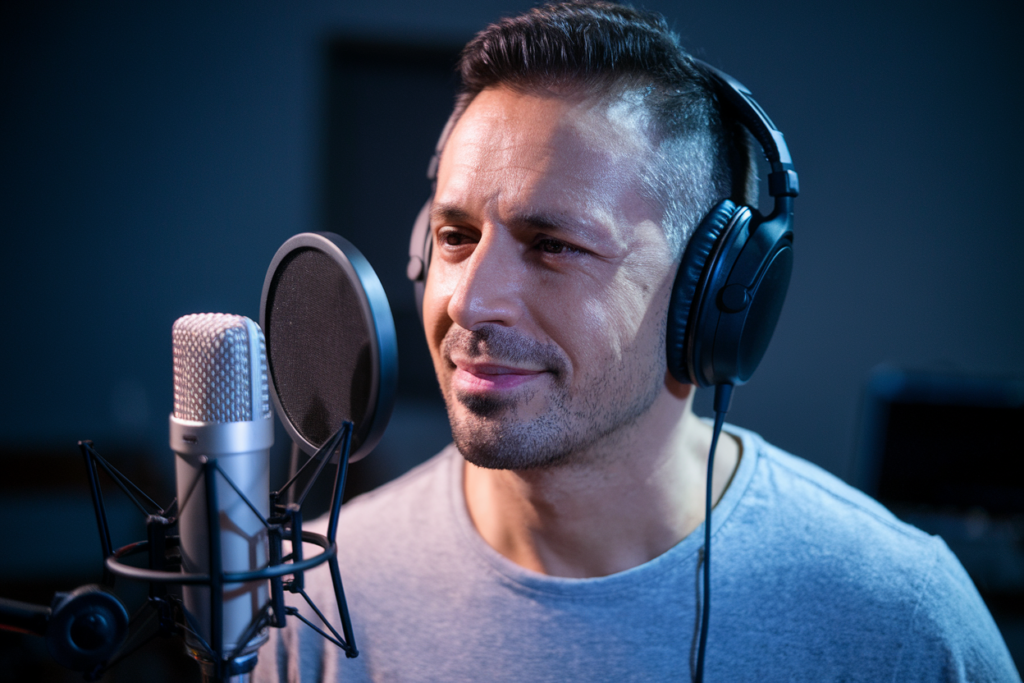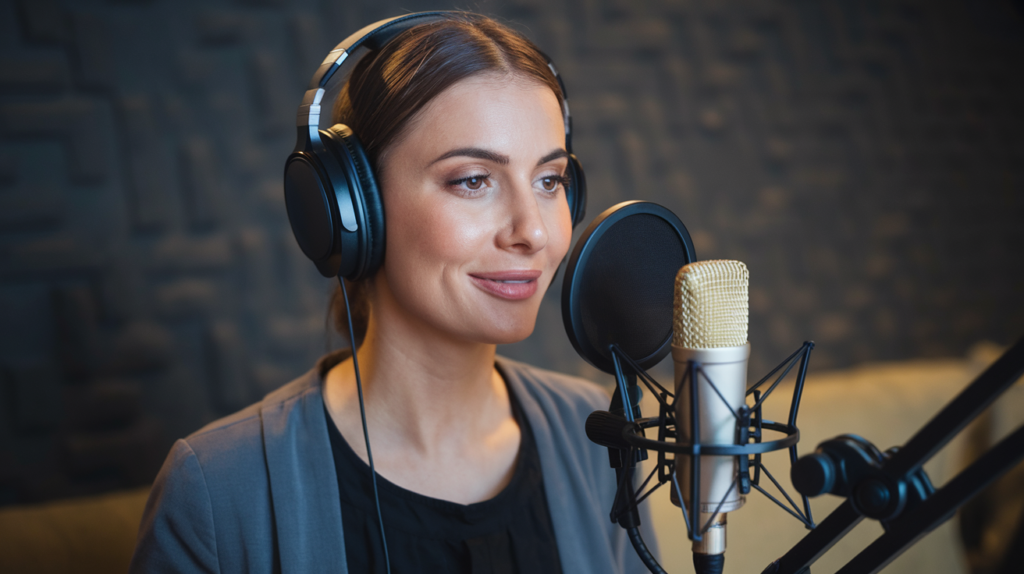Key Takeaways
- Understanding Dubbing: Video dubbing involves replacing original audio with a new language track, enhancing accessibility and viewer engagement.
- Importance of Turkish Dubbing: Dubbed content in Turkish can attract millions of potential viewers, making it essential for creators targeting the growing Turkish digital market.
- Using Quality Tools: Professional software like Adobe Audition and Reaper is recommended for high-quality dubbing, while investing in quality hardware such as microphones and audio interfaces significantly improves sound clarity.
- Structured Dubbing Steps: Effective dubbing requires careful preparation, including translating scripts authentically, recording high-quality audio, and ensuring accurate synchronization with video visuals.
- Choosing the Right Voice Talent: Selecting skilled voice actors who understand emotional nuances is crucial for creating relatable and engaging dubbed content that connects with audiences.
- Maintaining Lip-Sync Accuracy: Properly aligning audio tracks with on-screen movements enhances believability; using editing software to visualize waveforms aids in achieving seamless synchronization.
Ever wondered how to dub videos in Turkish and reach a wider audience? The world of video content is booming, and adding Turkish audio can open doors to millions of viewers. Whether you’re a filmmaker, YouTuber, or just someone looking to share your passion, mastering the art of dubbing can elevate your projects.
Understanding Video Dubbing
Video dubbing involves replacing the original audio track of a video with a new one, typically in another language. This process enhances comprehension and accessibility for viewers who speak different languages.
What Is Video Dubbing?
Video dubbing is the art of synchronizing a new audio track to match the lip movements and expressions of on-screen characters. It’s not just about translating words; it’s about capturing emotions and intent. A skilled voice actor brings life to the dialogue, ensuring that the audience connects with the content emotionally. The choice of voice talent plays a crucial role; their tone, inflection, and delivery can make or break the overall impact.
Importance of Dubbing in Turkish
Dubbing videos in Turkish opens up doors to millions of potential viewers. With Turkey’s growing digital landscape, engaging local audiences becomes essential for success. Quality dubbing helps maintain viewer interest by providing an immersive experience that subtitles often can’t match. Properly executed dubbing showcases cultural nuances and makes content relatable, strengthening your connection with Turkish-speaking audiences.
Engaging professional voice artists ensures high-quality sound that resonates well with listeners. Whether you’re creating films, YouTube videos, or educational content, investing in talented voiceover professionals enhances your project’s appeal significantly.
Tools and Software for Dubbing
Selecting the right tools and software is crucial for successful video dubbing in Turkish. With the proper resources, you can ensure high-quality results that resonate with your audience.
Recommended Software Options
Consider using professional-grade software tailored for voiceovers. Popular choices include:
- Adobe Audition: This versatile audio editing program provides advanced features for mixing and mastering soundtracks.
- Audacity: A free, open-source option perfect for beginners, offering essential editing capabilities.
- Reaper: Known for its flexibility, this digital audio workstation supports multiple tracks and plugins to enhance your dubbing projects.
- Pro Tools: An industry standard among professionals, Pro Tools offers robust features ideal for complex projects involving numerous voice talents.
These options allow you to record, edit, and synchronize audio seamlessly with video footage. Prioritize user-friendly interfaces if you’re new to dubbing.
Hardware Requirements
Investing in quality hardware significantly impacts your dubbing process. Essential equipment includes:
- Microphone: Choose a condenser microphone known for capturing clear vocals. USB microphones offer convenience while XLR models provide superior sound quality.
- Audio Interface: An interface connects your microphone to a computer, facilitating better sound conversion and monitoring.
- Headphones: Opt for closed-back headphones that minimize external noise, allowing accurate monitoring during recording sessions.
- Acoustic Treatment: Soundproofing or acoustic panels help reduce echoes and background noise in your recording space.
By prioritizing these technical elements, you’ll set yourself up for success in creating engaging dubbed content that captivates Turkish-speaking audiences.
Steps to Dub Videos in Turkish
Dubbing videos in Turkish involves a series of structured steps that ensure the final product resonates with your audience. Follow these detailed steps for effective dubbing.
Preparing the Original Video
Start by selecting the video you want to dub. Ensure it has clear audio and visuals, as this simplifies the dubbing process. Next, analyze the script or dialogue within the video. Create a translated script in Turkish that captures not just the words but also emotions and intent—this is crucial for maintaining authenticity. Consider cultural nuances and local expressions to enhance relatability.
Recording the Turkish Audio
Choose skilled voice artists who specialize in voiceovers for your project. Their experience ensures high-quality recordings that reflect emotional depth and clarity. Set up a quiet recording environment with quality equipment like a condenser microphone and headphones to capture crisp sound while minimizing background noise. Record multiple takes of each line, allowing flexibility during editing by providing various options.
Synchronizing Audio with Video
Once you’ve recorded the audio, import both your original video and new Turkish audio into editing software. Align the audio tracks with corresponding visuals—ensure lip-sync accuracy for a seamless viewing experience. Adjust timing as needed; sometimes slight changes can make a significant difference in how natural everything sounds together.
By following these steps, you’ll create engaging dubbed content that connects effectively with Turkish-speaking audiences, enhancing their viewing experience.
Tips for Effective Dubbing
Dubbing videos in Turkish requires attention to detail and a few key strategies for success. Here are some essential tips that can enhance your dubbing projects.
Choosing the Right Voice Talent
Choosing the right voice talent can make or break your dubbed video. Look for voice artists who not only speak fluent Turkish but also understand the nuances of emotion and intent behind the original content. A skilled voice actor brings characters to life, ensuring that your audience feels connected to the material. Listen to samples of their previous work, paying attention to pronunciation and inflection. If possible, select someone with experience in dubbing; they’re more likely to grasp pacing and timing effectively.
Maintaining Lip-Sync and Timing
Maintaining lip-sync accuracy is crucial for effective dubbing. When you record the new audio, ensure that it aligns with the movements of the speakers on-screen. Use editing software that allows you to visualize audio waveforms alongside video frames; this makes synchronization easier. Adjust timing as needed during post-production to create a seamless viewing experience. Remember, well-timed dialogue enhances believability and keeps viewers engaged throughout your content.
By focusing on these aspects—selecting talented voice actors and prioritizing sync—your dubbed videos will resonate more deeply with Turkish-speaking audiences, elevating their overall experience.
Conclusion
Dubbing videos in Turkish is a powerful way to connect with a broader audience. By focusing on quality voice acting and effective synchronization, you can create content that resonates deeply with viewers. The right tools and techniques enable you to enhance comprehension while preserving the emotional weight of your original material.
Investing time in selecting skilled voice talent and the proper equipment pays off in creating an immersive viewing experience. As you embrace this art form, you’re not just translating words but also bridging cultures. With each dubbed project, you’ll unlock new opportunities to engage millions of Turkish-speaking audiences eager for captivating content.
Frequently Asked Questions
What are the benefits of dubbing videos in Turkish?
Dubbing videos in Turkish can significantly expand audience reach, attracting millions of viewers. It enhances comprehension and accessibility, providing a more immersive experience compared to subtitles. By capturing emotions and cultural nuances through skilled voice acting, creators connect better with Turkish-speaking audiences.
How does the video dubbing process work?
Video dubbing involves replacing the original audio track with a new one in another language. The process includes analyzing the script, creating a translated version that maintains emotional intent, recording high-quality audio with professional voice artists, and synchronizing it accurately with the visuals for a natural flow.
Why is quality dubbing important?
Quality dubbing is essential as it creates an engaging viewing experience that surpasses subtitles. It helps convey cultural nuances and emotions effectively, ensuring content resonates well with Turkish-speaking audiences. Properly executed dubbing opens doors to new markets and strengthens connections with viewers.
What tools are recommended for video dubbing?
For successful video dubbing in Turkish, professional-grade software like Adobe Audition, Audacity, Reaper, or Pro Tools is recommended for recording and editing. Additionally, investing in quality hardware such as condenser microphones, audio interfaces, closed-back headphones, and proper acoustic treatment is crucial for clear sound production.
How do I choose the right voice talent for dubbing?
When selecting voice talent for dubbing projects, listen to samples of their previous work to assess their experience and ability to capture emotional nuances. It’s important to choose voices that align with your content’s tone while ensuring they have prior experience in video dubbing for optimal results.
What tips can help me achieve effective lip-sync accuracy during dubbing?
To ensure effective lip-sync accuracy during dubbing: record multiple takes of each line; use editing software that allows you to visualize audio waveforms alongside video frames; make necessary timing adjustments during post-production; and maintain consistent pacing throughout the recording sessions for seamless integration into the final product.







